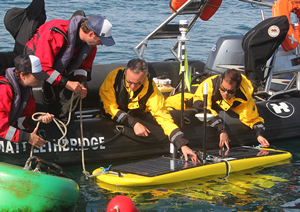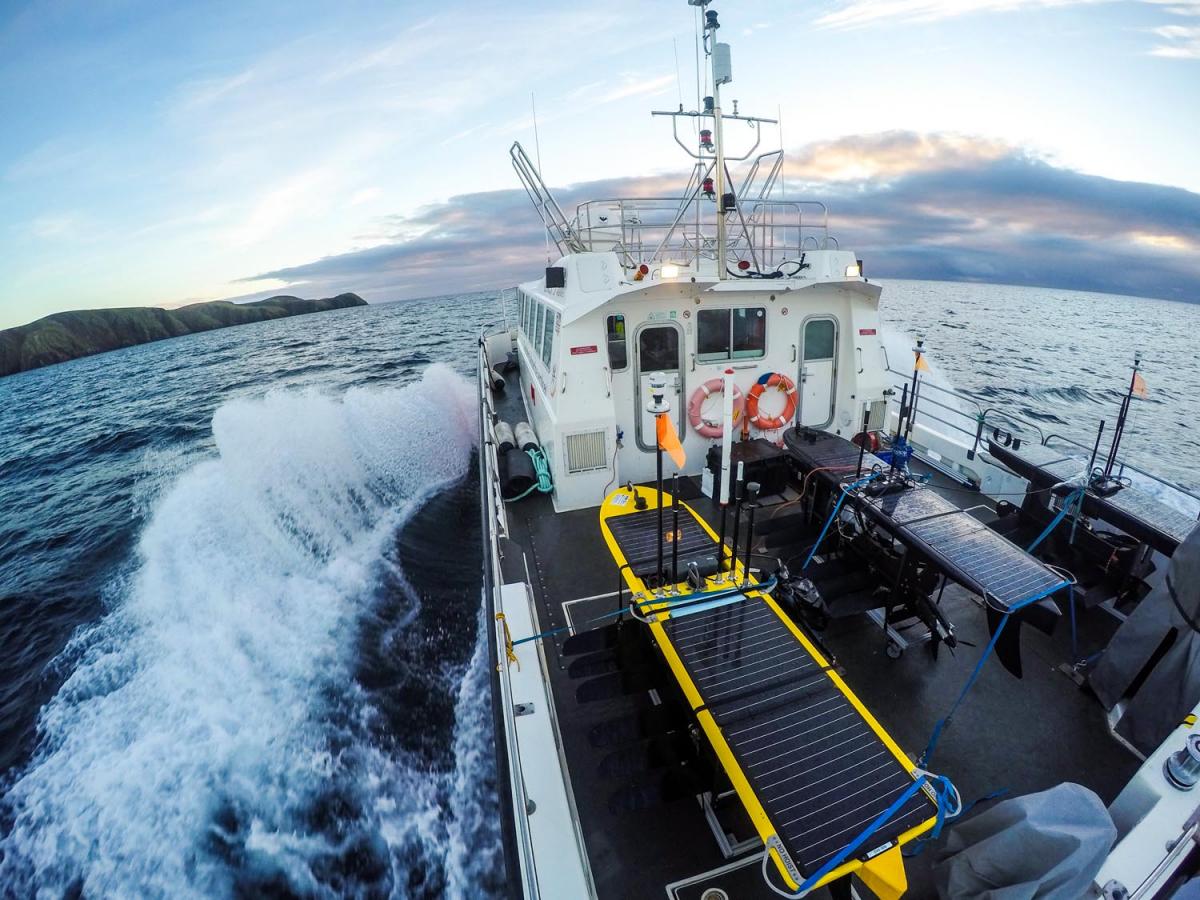Pioneering Robotic Exploration
Innovative technology is at the heart of this ambitious multi-phase project to explore large, dynamic areas of ocean using hi-tech robots. This is the first time such large fleets of autonomous vehicles have explored the ocean so far offshore, focusing on big long-term science.
The vehicles can travel great distances and are able to monitor both the environment and marine life for weeks at a time. Clean and green, they use energy from the ocean and move quietly through the water, which improves acoustic monitoring.
Environmental data is also key to the project, including weather information from the Met Office and the Royal Navy, satellite data from Plymouth Marine Laboratory and tidal information from the National Oceanography Centre.
 “Nothing on this scale has been attempted before. The range of vehicles and instruments being deployed at the same time is unique, and they can generate vast amounts of valuable scientific data. One advantage of using robotic vehicles is that they are relatively small and quiet compared to research ships, so they are ideal for making observations of marine life. This new technology is really providing a step change in our ability to measure and monitor the ocean.” Prof. Russell Wynn, Chief Scientist
“Nothing on this scale has been attempted before. The range of vehicles and instruments being deployed at the same time is unique, and they can generate vast amounts of valuable scientific data. One advantage of using robotic vehicles is that they are relatively small and quiet compared to research ships, so they are ideal for making observations of marine life. This new technology is really providing a step change in our ability to measure and monitor the ocean.” Prof. Russell Wynn, Chief Scientist

“This project is testing the capabilities of our newest vehicles, and the co-ordination of a large disparate autonomous vehicle fleet. Phase one was the first time we and our partners have put such a large, diverse range of marine autonomous vehicles in the water at the same time. Each time we do it, it’s a logistical and technical challenge. Each vehicle travels at a different speed and depth, has its own range of sensors, and requires its own pilot to keep watch on its position and activity. Co-ordinating a fleet to achieve the science objected is a challenging task, and teaches us a lot about running this sort of operation.” Dr Maaten Furlong, NOC’s Head of Marine Autonomous and Robotics Systems
